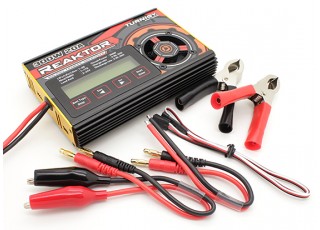I think you will find that battery balancing is not as big an issue as it is made out to be.
I've come to regard cell balancing as choosing the voltage at which you want to be able to rely on whole-pack voltage (rather than separate cell measurements) to make decisions. Even "top" and "bottom" are misnomers because i expect a well-informed user would dial their voltages away from the very ends of the knees anyway. It's more like "high" and "low" balancing... I'm shooting for "high" for all the reasons already established in other threads: Solar charged, low-C, many days of reserve capacity.
It is easier to start off with a battery that is balanced but if you have some sort of cell monitoring and alarm or even better a BMS that will shut down the charger or loads
Originally i thought i could skip the BMS. If i had bought better cells, i probably could (as you imply above), but watching individual cell voltages just with my meter has shown me that my cells are too unruly and i need cell-level monitoring. I caught one string shooting up very quickly once, and that got my attention. We leave the trailer unattended quite a lot when we go out for a day -- i don't want to come home to a plasma ball. So i just bought a cellog. With the whizbang jr. connected to the Classic and "high" balanced cells, i should be able to count on the classic keeping cell voltages under control by measuring pack voltage, and the JLD can throw the overcharge protection solenoid if pack voltage creeps up beyond that. But the cellog can watch cell voltages on the discharge end, and throw the LVD if any cell gets too drained.
I supposed i could use a second cellog to manage the overcharge protection too...then i wouldn't even need the JLD, or a BMS. But i'm trying to avoid throwing money/complexity at this system. The cellog is worthwhile because i otherwise have no realtime monitoring of cell voltages. And it's really inexpensive.
I agree that it is good to know what the capacity of the individual cells is before you start. If I had had the Reaktor before I commissioned my battery I would have done a capacity test. I would have probably done it on only a few cells as it would be allot of work and take some time to do the 32 cells that I have!
I would be very surprised if you find the variation between cells to be more that a couple of %.
Here are the charge/discharge curves that I did for one of the cells from my friend's system...
I have the manufacturer's published charge/discharge curve and i'm curious to compare it with my cells' actual performance, if i have time.
I think you will find that the measured SOC using the current flow too/from the battery will be more than a convenience as it can be accurate to within a few % if you adjust the reading to take into account the ~0.5% coulomb/current inefficiency of LFP batteries. It is far harder to work out the SOC from the battery voltage.
I have set my SOC counter to read 0% when there is 10% of the rated capacity left in the battery and it resets to 100% every time the average cell voltage is 3.45V with a charge current of less than C/20
Sorry, it wasn't intended to be an advert.



Comment